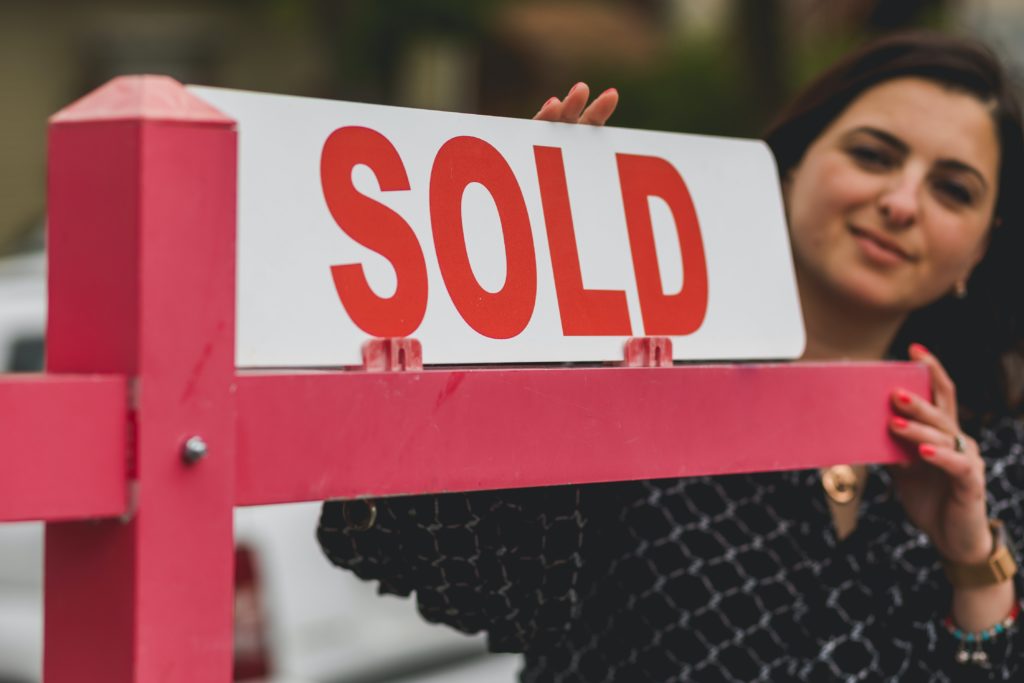Should I Be Worried About the Real Estate Market Crashing?
Are We in a Real Estate Bubble?
If you define a “real estate bubble” as a time when real estate prices rise rapidly… then yes, we are in a real estate bubble …and have been for a bit over a year.
Is This a Dangerous Real Estate Bubble Like in 2007-2008?
No, this real estate bubble is a completely different situation. The home price bubble of 2007-2008 was caused primarily by sub-prime lending and dishonest lending practices that were rampant from 1999-2008. During this time:
- Sub-prime lending opened the door for millions of unqualified buyers to easily obtain home mortgages.
- Underwriting was slack and sloppy.
- There was no accountability for loan originators. They were paid for each origination, and what happened after that was someone else’s problem.
- Once lenders figured out how to carve up huge packages of loans into “tranches” based on projected risk — lenders knew that investors did not know what they were buying.
- Increasing home prices hid the problems as it is hard to get “upside-down” in a market where home prices were rapidly rising.
- “Liars loans” — also called “no-doc” loans — made it possible for people to buy and finance multiple properties, including properties they had no way to carry if not immediately and constantly rented.
Anyone who has not seen The Big Short by Michael Lewis needs to see the movie or read the book.
Today’s bubble is caused by pent-up demand and low inventory. People today are not buying homes on speculation (a gamble) like in the Great Recession. People are buying today for the most part because they want homeownership, and prices are climbing because demand is greatly outstripping supply. In short, this real estate bubble is different from that of 2007-2008 in these ways:
- An honest surge in demand
- Lenders now must carefully underwrite all loans
- Appraisal guidelines and supervision is much more strict
- A clear understanding of where the abuses of 1999-2008 occurred and much more oversight
Why Is There This Sudden Surge in Demand?
There are many reasons why demand is surging, including:
This Generation Waited to “Settle Down”

Before the COVID-19 pandemic, generations of people ranging from millennials to Generation Y had begun entering the housing market. There are 72 million Americans in this generation, our nation’s largest ever. These now thirty-somethings have put off marriage and children longer than any prior generation. Now in their 30s, they have settled down and began to think about and desire homeownership.
It was not really a matter of settling down. Many of these “babies of the baby boomers” were, in fact, being very responsible for staying out of homeownership for many reasons, such as:
- They had significant student debt.
- They had first jobs that likely would not be their “lifetime” career.
This generation has known that the days of working for the same company throughout one’s whole career are passed. I have heard repeatedly, “I love my job, but I may not be here in two years…I don’t want to deal with a mortgage like I saw my parents wrestle with from 2008 through 2014.”
The COVID-19 Pandemic

The COVID-19 pandemic shut everything down: no looking at houses, no on-site sales of new construction, no one knew what they could and could not do, or how long this lockdown would last. Real estate offices closed. Sales, job hiring, moves, new construction, and all real estate activities were off the mark for months. It has only been in the last few months that activity has increased.
Once states and the federal government began to lift restrictions, the pent-up demand from the normal real estate cycle began to show itself and additional factors. One example is more seniors are choosing to age in place. While the pandemic has kept everyone at home, more and more seniors were deciding to stay in their homes and age in place, even before COVID-19.
A 2018 survey by AARP showed that 76% of Americans older than 50 said they wanted to age in place and stay in their homes. As seniors decide to stay in their homes, there are fewer resale homes available. Additionally, seniors are living longer, again meaning fewer resale homes coming on the market.
Why Is The Supply of Homes So Low?
As more people stay in place, there are fewer homes to come on the market as resales. In addition to seniors staying place, the low supply of homes can also be attributed to:
Record-Low Mortgage Rates
Over the last few years, record-low mortgage rates have encouraged people to refinance and take some of their home’s equity to remodel and update their homes. Many of these folks have invested in updating and improving the homes they might otherwise have sold.
Rental Property Investments
The attractiveness of owning rental properties became better understood by average families in the past 10 years as they began to look at poor returns on dumping their money into savings accounts. People began to get nervous about the uncertainty in the stock market, so more and more turned to real estate as a viable investment. As a result, many homeowners kept the homes they were living in when they moved and turned their existing home into their first rental property.
Issues With New Construction
New construction never recovered from the Great Recession. When the bust of 2007-2008 hit, new construction dried up. Many builders went bankrupt, especially the smaller local and regional builders. The supply of new homes died and was very slow to come back. For years after the Great Recession, the number of housing starts was way below pre-recession levels. Many small local and regional builders went bankrupt and never came back. Construction is now centralized in the large national builders, many of whom are public companies.
The pandemic caused long delays in processing building permits and subdivision approvals, and staff who worked from home and council meetings had to go online. The whole development process that brings new products online was slowed down. Builders have also experienced significant shortages of materials and labor as well as supply chain delays and problems — all due to the pandemic and the shutdown of the economy.
Where Do We Go From Here?

There are no signs that the current hot demand for housing is going to slow for the foreseeable future, and there appears to be no overnight fix for the lack of supply. As mentioned above, millennials now want to be homeowners. People who have refinanced and improved their homes (and now see the higher prices to buy anything) are likely to stay put – meaning less inventory. Seniors want to stay in place, which means less inventory. Builders are ramping back up, but the process is slow as there are supply chain problems, shortages of materials, labor shortages, and increased time lags in the approval process, which means slow remedy for the supply issue. Existing homeowners keeping their present homes as investments means less inventory.
As long as we continue to see new buyers coming into the marketplace – and as long as we do not develop a glut in supply – there will not be enough supply to satisfy demand, and prices will continue to go up.
An Important Additional Point
We would be remiss if we did not mention the big influx of foreign investment in American single-family homes. Investors worldwide are looking for a safe place to “park” cash, and owning home rental properties is very popular. This is only likely to increase over time — and this means more competition for the available homes.
The only way the current bubble could burst is if there develops a big glut of properties for sale and the number of buyers wanting those properties plummets. There are just no signs or indicators for that.
What is likely to occur over time is that supply will gradually begin to catch up with demand, and demand will gradually decrease as the hunger for housing by all segments of the population begins to be met, but this will take years, not months.
As supply gradually catches up with demand, the price climb will certainly soften. However, as the costs of materials and labor continue to go up, the price of housing is not going to come down. Even in the world of resale housing, one very serious approach to valuation and appraisal is replacement cost projection. As materials, land, and new construction continue to go up in price, so will resale homes. We can expect resales home prices to continue to climb along with new construction.
A gradual increase in supply coupled with a gradual decline in demand will lead to a sensible cooling of the real estate market. That is what we see coming. There is no sign of a “bust” and no need for fears of that. This is not 2007-2008.
